What Does 'Ghosting' Mean? [English]

Written by
Ernest Bio Bogore

Reviewed by
Ibrahim Litinine
![What Does 'Ghosting' Mean? [English]](/_next/image?url=https%3A%2F%2Fcdn.sanity.io%2Fimages%2F147z5m2d%2Fproduction%2F8f2a79957cdf115a94524c2f795abe51ea7bdc06-2240x1260.png&w=3840&q=75)
When someone tells you that another person is "ghosting" you, they're describing a specific pattern of communication breakdown that has become increasingly prevalent in our digital age. Ghosting occurs when someone abruptly cuts off all communication without explanation, leaving the other person confused and seeking answers.
This phenomenon extends beyond romantic relationships into friendships, professional settings, and even family dynamics. Understanding ghosting's mechanics, psychology, and implications becomes essential when navigating modern relationships where digital communication dominates our interactions.
Defining Ghosting: The Sudden Communication Void
Ghosting represents the complete cessation of communication from one party in a relationship or interaction. The person being ghosted experiences an abrupt transition from regular contact to absolute silence. No explanations are provided, no closure is offered, and attempts to reconnect are typically ignored.
The term originated from the idea that the person has become like a ghost—present in your digital spaces through past conversations and shared connections, yet completely unresponsive to any current communication attempts. This creates a peculiar form of presence-absence that distinguishes ghosting from other forms of relationship endings.
What makes ghosting particularly challenging is its ambiguity. Unlike explicit rejections or breakups, ghosting leaves the recipient questioning whether the silence is temporary, permanent, or indicative of some external circumstance preventing communication. This uncertainty often proves more psychologically taxing than direct confrontation.
The Psychology Behind Ghosting Behavior
Several psychological factors drive individuals to choose ghosting over direct communication. Conflict avoidance ranks among the primary motivators, as many people find difficult conversations emotionally overwhelming or anxiety-provoking. Ghosting provides an escape route that requires no emotional labor or uncomfortable confrontations.
Fear of emotional backlash also influences ghosting decisions. When someone anticipates anger, tears, or prolonged discussions about relationship problems, disappearing entirely seems like the path of least resistance. This avoidance strategy, however, merely transfers the emotional burden to the other party.
Attachment styles significantly impact ghosting tendencies. Individuals with avoidant attachment patterns often struggle with intimacy and emotional vulnerability. When relationships become too demanding or emotionally intense, ghosting offers a way to maintain psychological distance without engaging in the messy work of relationship navigation.
Digital communication platforms inadvertently facilitate ghosting behavior by reducing the perceived humanity of the other person. Text-based interactions lack the emotional cues present in face-to-face communication, making it easier to disconnect from the emotional impact of one's actions on others.
Common Ghosting Scenarios and Contexts
Romantic Relationships
Romantic ghosting typically occurs after several dates or during early relationship stages when commitment levels remain undefined. One person might ghost after physical intimacy, realizing they want different things, or when the relationship begins requiring more emotional investment than they're prepared to give.
Dating app culture has normalized ghosting to some extent, with many users treating matches as disposable rather than as real people deserving basic courtesy. The abundance of options creates a mindset where investing effort in difficult conversations seems unnecessary when new connections are readily available.
Professional Settings
Workplace ghosting manifests when colleagues stop responding to emails, avoid participation in collaborative projects, or fail to acknowledge work-related communications. This behavior often stems from workplace conflicts, job dissatisfaction, or strategic career positioning where maintaining certain relationships no longer serves professional interests.
Job candidate ghosting has become increasingly common, with applicants failing to show up for interviews or accepting positions then disappearing before starting work. Conversely, employers sometimes ghost candidates after interviews, leaving them without closure regarding their application status.
Friendships
Friend ghosting often occurs gradually, with one person becoming less responsive over time until communication ceases entirely. This might happen due to life transitions, changing priorities, or unresolved conflicts that neither party feels equipped to address directly.
Social media adds complexity to friend ghosting, as the ghosting party might continue viewing the other person's content or maintaining digital connections while avoiding direct communication. This creates a confusing dynamic where engagement exists on some levels but not others.
Family Dynamics
Family ghosting represents perhaps the most emotionally charged form of this behavior. Adult children might ghost parents due to unresolved trauma, fundamental value differences, or boundary violations. Similarly, parents might ghost children following disagreements about life choices or relationship decisions.
The permanence implied in family ghosting often carries more significant psychological weight than other forms, as family relationships typically involve deeper emotional investments and longer histories.
The Emotional Impact of Being Ghosted
The psychological effects of being ghosted extend beyond simple disappointment or rejection. The absence of closure creates a state of cognitive dissonance where the mind struggles to process the incomplete narrative. This ambiguity often leads to rumination, with the ghosted person cycling through possible explanations and self-blame.
Rejection sensitivity becomes heightened following ghosting experiences. The sudden, unexplained nature of the abandonment can trigger deep-seated fears of unworthiness or inadequacy. Many people report questioning their own perceptions of the relationship quality and their ability to read social cues accurately.
Self-esteem impacts vary depending on individual resilience and prior experiences with rejection. Some people internalize ghosting as evidence of personal failings, while others recognize it as reflecting the ghoster's communication limitations rather than their own worth.
Trust issues frequently develop following ghosting experiences, making future relationships more challenging to navigate. The fear of sudden abandonment can create anxiety in new connections, leading to either clinginess or preemptive emotional withdrawal as protective mechanisms.
The Ghoster's Perspective: Why People Choose Silence
Understanding why people ghost requires examining the decision from their viewpoint rather than solely focusing on the impact on the ghosted party. Many ghosters genuinely believe they're choosing the kindest option by avoiding potentially hurtful conversations.
Overwhelm plays a significant role in ghosting decisions. When someone feels emotionally flooded or unable to articulate their feelings clearly, disappearing might seem preferable to engaging in what they perceive as inevitably messy or complicated discussions.
Some ghosters operate under the assumption that their silence communicates their disinterest clearly enough, failing to recognize that ambiguity creates more suffering than direct rejection. This represents a fundamental misunderstanding of human psychology and the need for closure in relationships.
Personal history with confrontation influences ghosting choices. Individuals who experienced volatile or emotionally manipulative responses to relationship discussions might develop ghosting as a protective strategy, even when current relationships don't warrant such extreme measures.
Digital Communication and Ghosting Culture
Technology has fundamentally altered relationship dynamics by making communication simultaneously easier and more superficial. The ease of blocking, unfriending, or simply not responding has lowered the barriers to relationship exit strategies.
Social media platforms create illusions of connection that can make ghosting feel less severe to the person doing it. When someone remains visible through posts and stories, the ghoster might minimize the impact of their communication withdrawal, viewing it as a reduction in contact rather than complete abandonment.
Read receipts and message delivery confirmations add another layer of complexity to ghosting situations. When someone can see that their messages have been read but not responded to, the intentional nature of the silence becomes undeniable, often intensifying the emotional impact.
The volume of digital communication creates decision fatigue around response obligations. Some people develop ghosting patterns simply because they feel overwhelmed by the constant need to maintain multiple digital relationships simultaneously.
Recognizing Ghosting Patterns
Identifying ghosting requires distinguishing between temporary communication lapses and permanent withdrawal. Early warning signs include increasingly delayed responses, shorter messages, reduced engagement with shared content, and excuses for avoiding in-person meetings.
Response quality deterioration often precedes complete ghosting. Messages become generic, questions go unanswered, and emotional content receives minimal acknowledgment. These changes indicate diminishing investment in the relationship before communication ceases entirely.
Behavioral inconsistencies provide additional clues about impending ghosting. When someone becomes active on social media while ignoring direct messages, or engages with mutual friends while avoiding you specifically, ghosting intentions become apparent.
How to Respond When You've Been Ghosted
The immediate response to being ghosted should prioritize your emotional well-being over attempts to force communication. Recognize that ghosting reflects the other person's communication limitations rather than your worth as an individual.
Avoid excessive follow-up attempts, which rarely produce satisfactory outcomes and often compound feelings of rejection. One clear, direct message expressing your confusion and desire for closure is appropriate, but repeated attempts typically reinforce the ghoster's avoidance behavior.
Focus energy on relationships that demonstrate mutual respect and healthy communication patterns. Ghosting experiences, while painful, can serve as valuable filters for identifying people who lack the emotional maturity or communication skills necessary for meaningful relationships.
Consider the ghosting as information about compatibility rather than personal rejection. Someone who cannot engage in difficult conversations or provide basic courtesy likely wouldn't prove to be a reliable long-term partner, friend, or colleague anyway.
Preventing Ghosting in Your Own Relationships
Clear communication about expectations and boundaries from the beginning of relationships can reduce ghosting likelihood. When people understand what to expect and feel safe expressing concerns, they're less likely to resort to avoidance strategies.
Create environments where difficult conversations feel manageable by demonstrating emotional regulation and non-judgmental responses when others share challenging information. People ghost when they anticipate volatile or overwhelming reactions to their honesty.
Regular relationship check-ins, particularly in romantic contexts, provide opportunities to address issues before they become overwhelming enough to trigger ghosting responses. These conversations normalize discussing relationship dynamics and reduce the perceived stakes of individual difficult conversations.
Model healthy communication by being direct about your own needs and concerns. When you demonstrate that honest communication leads to positive outcomes rather than conflict, others feel safer engaging in similar directness.
The Broader Social Implications of Ghosting Culture
The normalization of ghosting reflects broader cultural shifts toward individualism and reduced social accountability. When personal comfort consistently takes precedence over basic courtesy, social cohesion and trust suffer at community levels.
Ghosting culture contributes to increased social anxiety and relationship insecurity across demographics. When people expect potential abandonment in their relationships, they invest less emotionally and contribute to the very disconnection they fear.
Professional ghosting impacts workplace culture and business relationships, creating environments where commitments feel tentative and follow-through becomes uncertain. This uncertainty increases stress and reduces collaborative effectiveness.
The acceptance of ghosting as normal behavior represents a concerning trend toward conflict avoidance that prevents individuals from developing crucial communication skills necessary for mature relationships and professional success.
Moving Forward: Building Resilience Against Ghosting
Developing emotional resilience against ghosting requires building self-worth that doesn't depend on others' communication choices. When your sense of value comes from internal sources rather than external validation, ghosting loses much of its power to cause lasting damage.
Cultivate relationships with people who demonstrate consistent communication patterns and emotional availability. Quality relationships with reliable communicators provide evidence that ghosting reflects individual limitations rather than universal relationship norms.
Practice direct communication in your own relationships to normalize honest conversations about difficult topics. When you consistently demonstrate that challenging discussions can be navigated successfully, you attract others who value similar directness.
Recognize ghosting as a form of information about someone's character and communication capabilities. Rather than viewing it as rejection, consider it early identification of incompatibility that saves time and emotional investment in unsuitable relationships.
Learn Any Language with Kylian AI
Private language lessons are expensive. Paying between 15 and 50 euros per lesson isn’t realistic for most people—especially when dozens of sessions are needed to see real progress.
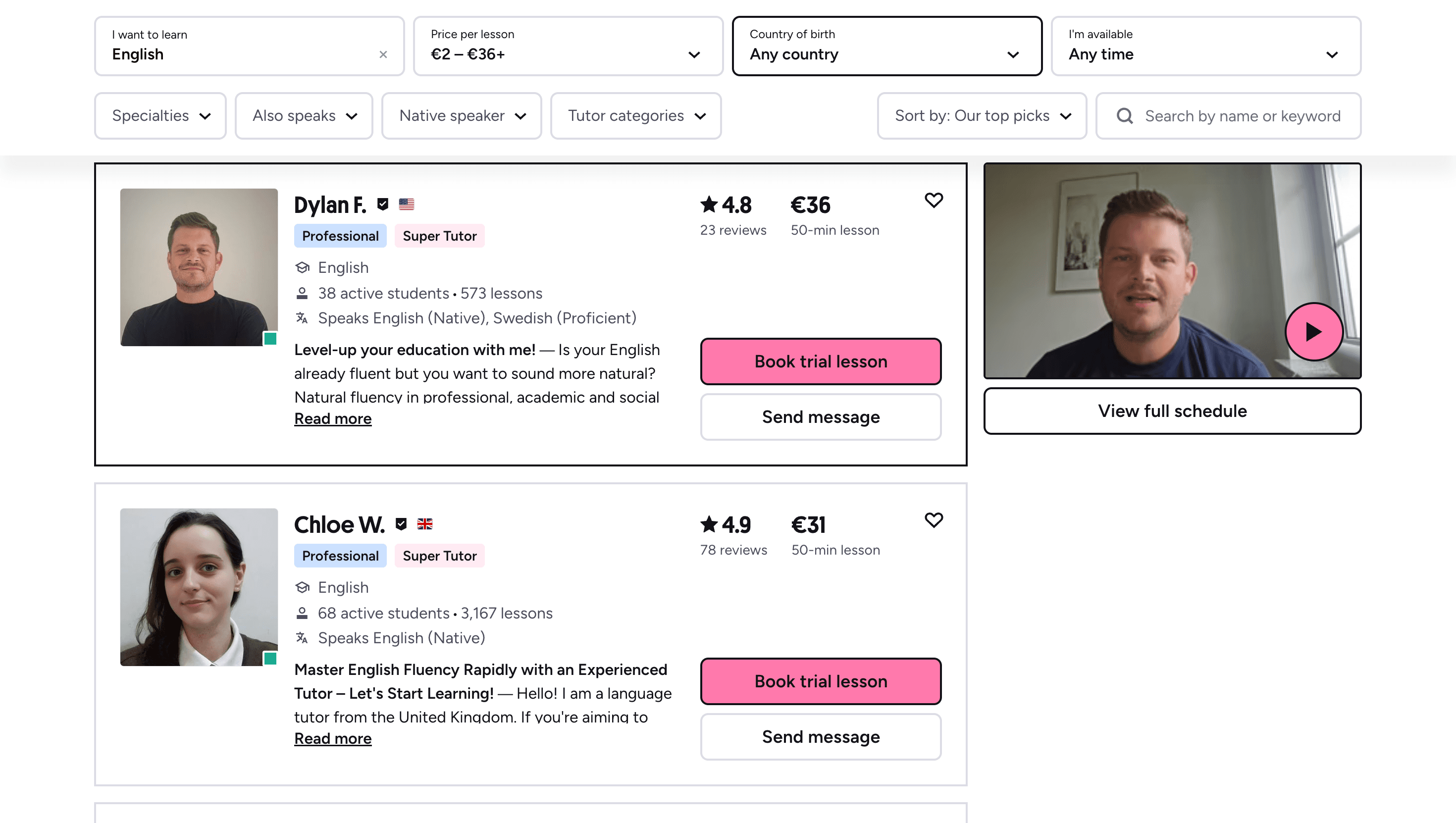
Many learners give up on language learning due to these high costs, missing out on valuable professional and personal opportunities.
That’s why we created Kylian: to make language learning accessible to everyone and help people master a foreign language without breaking the bank.
To get started, just tell Kylian which language you want to learn and what your native language is
Tired of teachers who don’t understand your specific struggles as a French speaker? Kylian’s advantage lies in its ability to teach any language using your native tongue as the foundation.
Unlike generic apps that offer the same content to everyone, Kylian explains concepts in your native language (French) and switches to the target language when necessary—perfectly adapting to your level and needs.

This personalization removes the frustration and confusion that are so common in traditional language learning.
Choose a specific topic you want to learn
Frustrated by language lessons that never cover exactly what you need? Kylian can teach you any aspect of a language—from pronunciation to advanced grammar—by focusing on your specific goals.
Avoid vague requests like “How can I improve my accent?” and be precise: “How do I pronounce the R like a native English speaker?” or “How do I conjugate the verb ‘to be’ in the present tense?”

With Kylian, you’ll never again pay for irrelevant content or feel embarrassed asking “too basic” questions to a teacher. Your learning plan is entirely personalized.
Once you’ve chosen your topic, just hit the “Generate a Lesson” button, and within seconds, you’ll get a lesson designed exclusively for you.
Join the room to begin your lesson
The session feels like a one-on-one language class with a human tutor—but without the high price or time constraints.
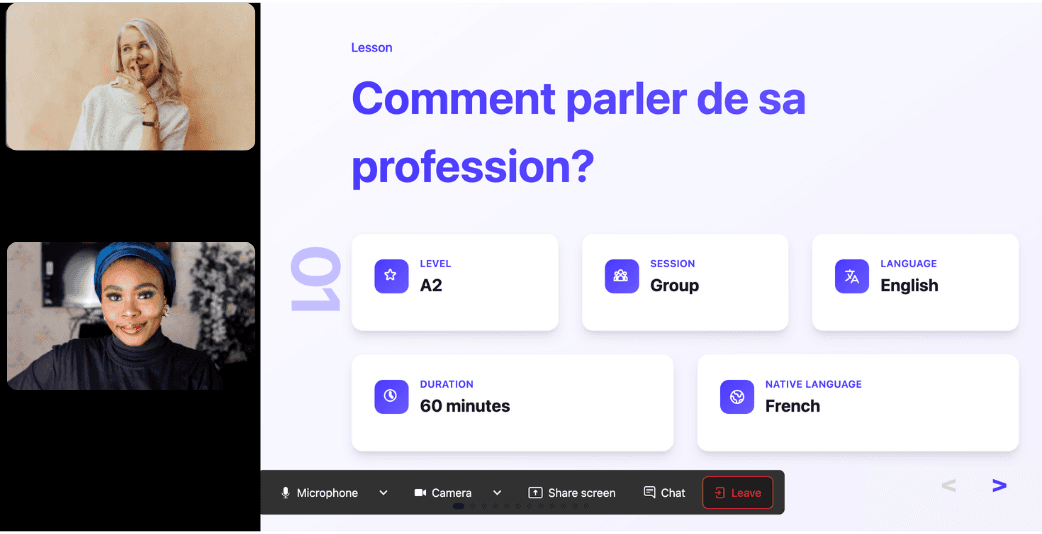
In a 25-minute lesson, Kylian teaches exactly what you need to know about your chosen topic: the nuances that textbooks never explain, key cultural differences between French and your target language, grammar rules, and much more.
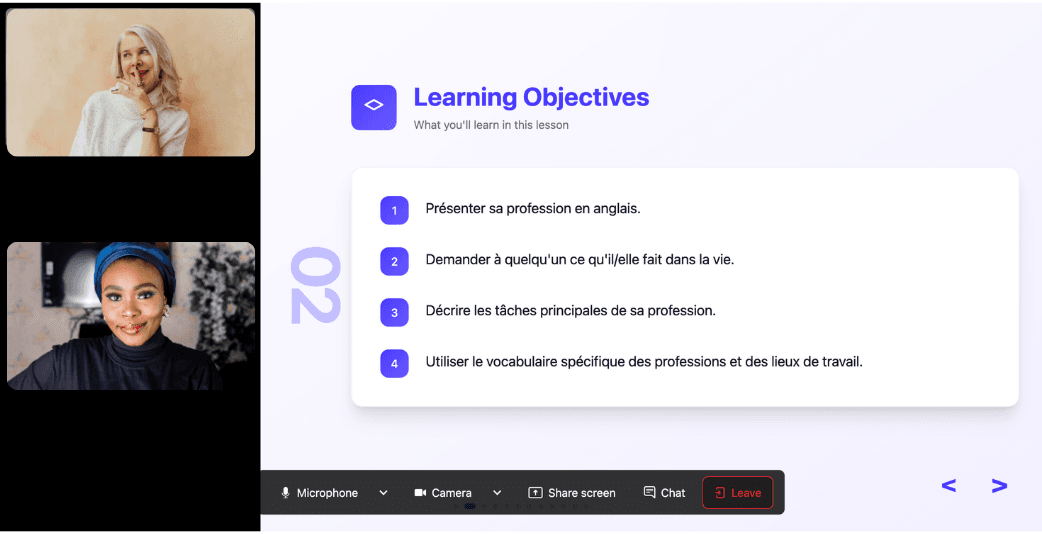
Ever felt frustrated trying to keep up with a native-speaking teacher, or embarrassed to ask for something to be repeated? With Kylian, that problem disappears. It switches intelligently between French and the target language depending on your level, helping you understand every concept at your own pace.
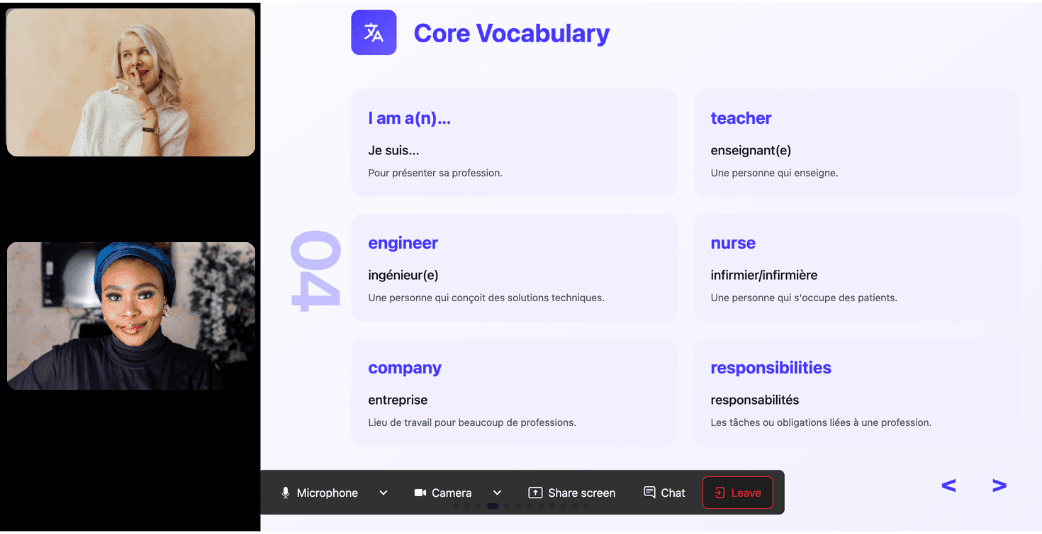
During the lesson, Kylian uses role-plays, real-life examples, and adapts to your learning style. Didn’t understand something? No problem—you can pause Kylian anytime to ask for clarification, without fear of being judged.
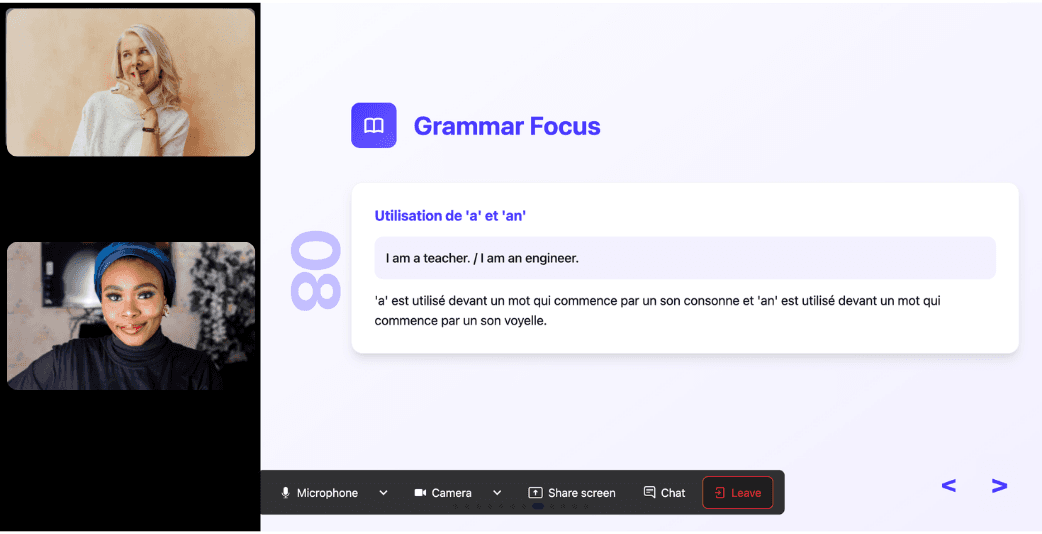
Ask all the questions you want, repeat sections if needed, and customize your learning experience in ways traditional teachers and generic apps simply can’t match.
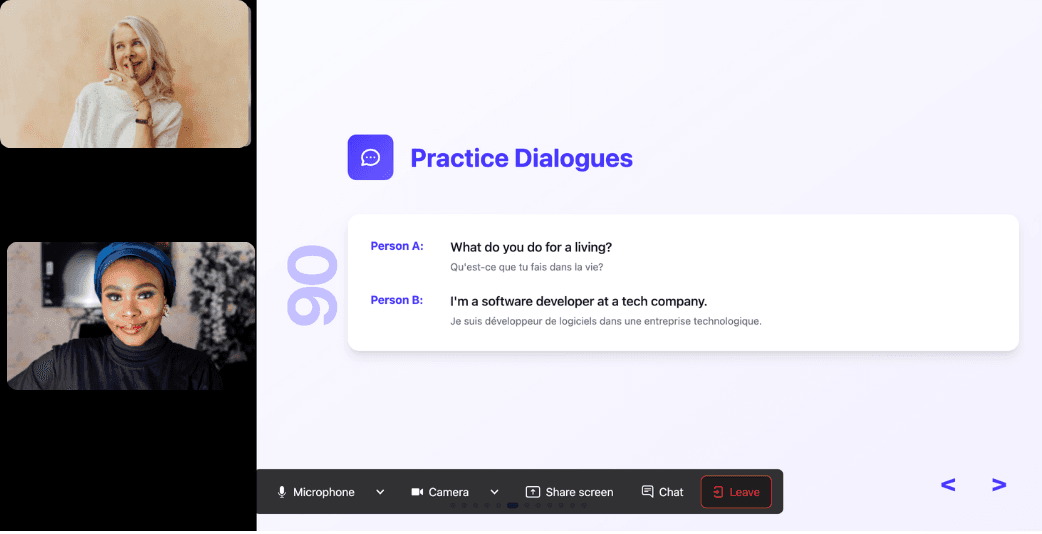
With 24/7 access at a fraction of the cost of private lessons, Kylian removes all the barriers that have kept you from mastering the language you’ve always wanted to learn.
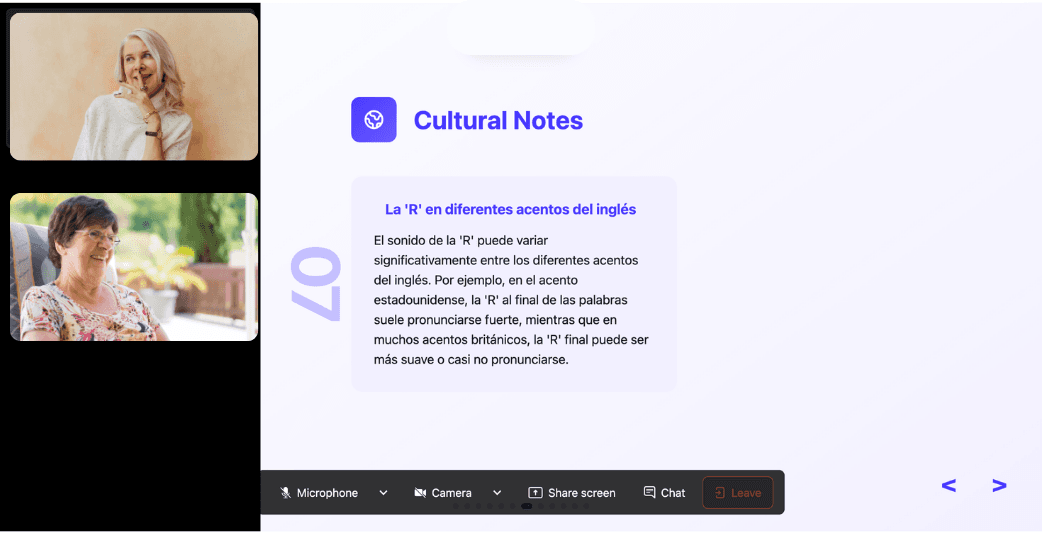
Similar Content You Might Want To Read

Small vs Little, Big vs Large, Tall vs High: Key differences
English vocabulary presents numerous challenges for learners, particularly when dealing with seemingly interchangeable adjectives. The nuances between synonyms like "small" and "little," "big" and "large," or "tall" and "high" often confuse even advanced speakers. These distinctions aren't merely academic—they directly impact effective communication. Understanding these subtle differences empowers speakers to express themselves with precision. Rather than randomly selecting words, conscious choices reflect linguistic sophistication and cultural awareness. This precision matters because inappropriate synonym usage can alter intended meanings or create unnatural expressions that native speakers immediately recognize as awkward. Let's examine these key pairs of dimensional adjectives to better understand when to use each one appropriately.

Mastering the French Passé Composé: A Strategic Guide
Effective communication in any language hinges on expressing when actions occurred. French offers several past tenses, but none more crucial for everyday communication than the passé composé. This tense serves as the foundation for discussing completed actions in French, making it an essential milestone for language learners. Let's examine why this tense matters, how to construct it properly, and how to implement it efficiently in your French language practice.

Learn American English Online: Best Ways in 2025
The American English learning landscape has fundamentally shifted. While millions chase grammar perfection and vocabulary expansion, they're missing the critical component that determines real-world communication success: authentic pronunciation and accent mastery. This disconnect explains why learners with advanced grammar knowledge still struggle in actual conversations with native speakers. The data reveals a stark reality. Traditional language learning approaches prioritize written competency over spoken fluency, creating a generation of learners who excel on paper but falter in face-to-face interactions. The difference between knowing English and communicating effectively in American English lies in mastering the subtle pronunciation patterns, connected speech rhythms, and cultural contexts that textbooks rarely address. This guide cuts through conventional wisdom to focus on what actually works for developing an authentic American English accent in 2025. Every strategy presented here addresses specific barriers that prevent non-native speakers from achieving natural-sounding American pronunciation.

Preterite vs Imperfect: Master Spanish Past Tenses
Spanish past tenses present a particular challenge for English speakers. The distinction between preterite and imperfect tenses often becomes a stumbling block for language learners seeking fluency. This comprehensive guide equips you with precise explanations, strategic approaches, and authentic examples to master this fundamental aspect of Spanish grammar.

90-Day Plan: Reach Conversational Language Fluency Fast
The promise of rapid language acquisition often feels like marketing hyperbole. Yet neuroscience research and documented polyglot achievements demonstrate that reaching conversational proficiency within three months isn't just possible—it's systematically achievable when approached with precision. The critical distinction here isn't about fluency. Conversational proficiency represents a specific threshold: the ability to engage in meaningful exchanges, navigate daily interactions, and express thoughts coherently without native-level grammatical perfection. This targeted approach eliminates the overwhelming scope that derails most language learners.

Goal vs Target vs Aim vs Objective: The Critical Differences
The English language's precision matters more than most people realize. When executives interchange "goal" with "objective" in boardrooms, or when project managers conflate "targets" with "aims," they're not just being imprecise—they're undermining their strategic communication. These four terms carry distinct meanings that, when understood correctly, can transform how organizations approach planning and execution. This distinction isn't academic wordplay. Research from Harvard Business School shows that teams using precise terminology in strategic planning achieve 23% better outcomes than those using vague or interchangeable language. The reason? Clarity of language drives clarity of thought, which drives clarity of action.